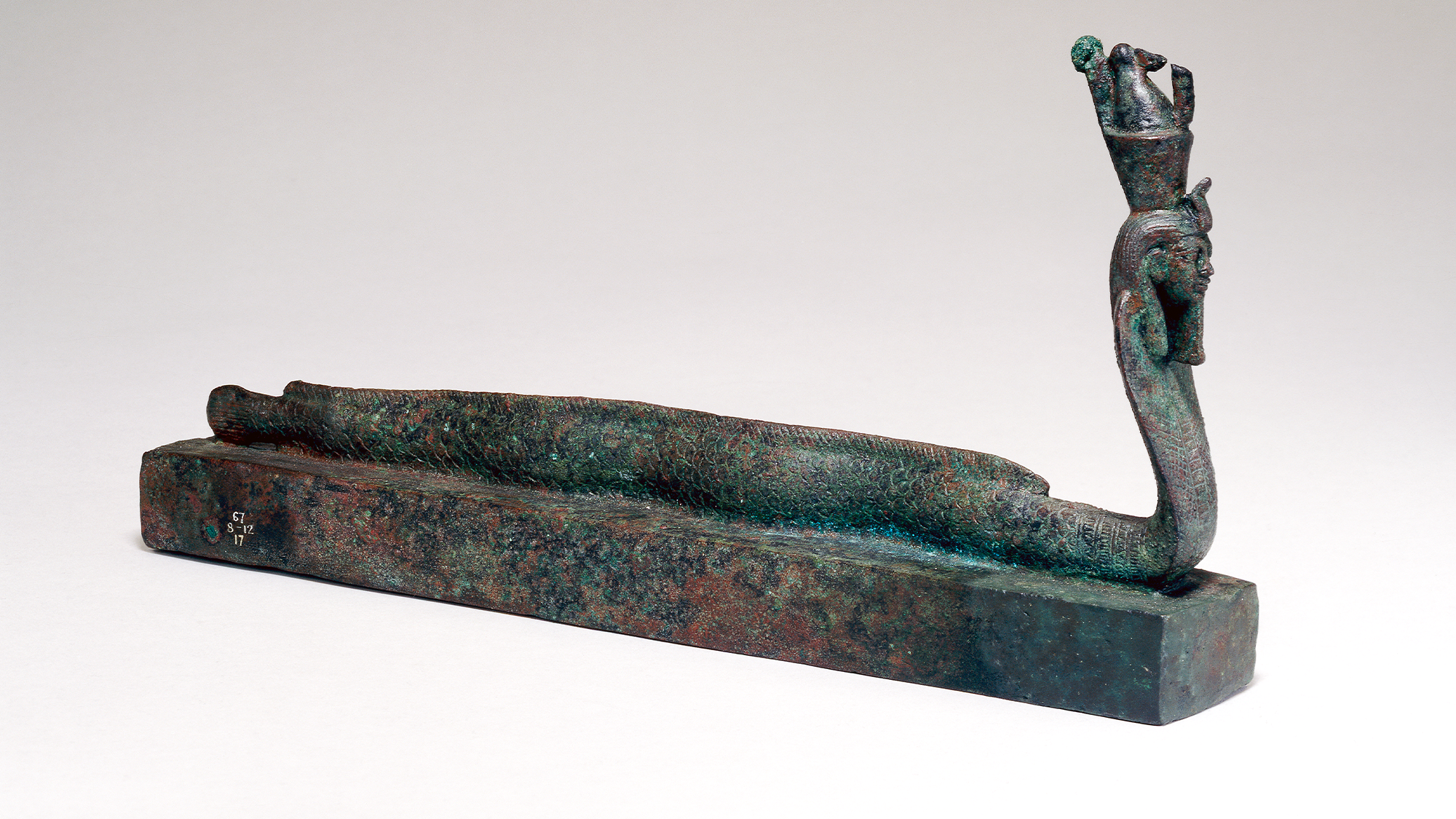

What’s inside a miniature, 2,500-year-old coffin? Well, now researchers at the British Museum know. A team of scientists used a noninvasive technique called neutron tomography to peer inside six Egyptian animal coffins that have been sealed for over two millennia. The contents are described in a study published on April 20 in the journal Scientific Reports.
[Related: A gold-laced mummy could be the ‘oldest and most complete’ specimen found in Egypt.]
Neutron tomography allows researchers to peer inside without disturbing the coffins. It creates images based on the way that the neurons emitted by a source pass through it. Neutron tomography is more effective than x-rays at seeing through metal. The team developed this technique after other noninvasive methods of looking into the coffins, such as traditional X-rays, didn’t work on the coffins.
The coffins in the study range from approximately two to 12 inches long and date back to sometime between 664 BCE and 250 BCE, during Egypt’s late period . The decorative coffins were built with copper compounds and are covered with images of eels, cobras, and lizards. Three were found in the ancient city of Naukratis and two were in Tell el-Yehudiya in 1885, but the other two have mysterious, currently unknown origins.
Within three of the coffins, the authors identified bones including an intact skull that has similar dimensions to a group of lizards endemic to northern Africa. Two of the coffins have evidence of more broken down bones.
“In the first millennium BC, lizards were commonly mummified in ancient Egypt, as were other
reptiles, cats, dogs, falcons, ibises, shrews, fishes… Lizards, like snakes and eels, were particularly associated with ancient Egyptian solar and creator gods such as Atum and perhaps, in the case of Naukratis, with Amun-Ra Shena,” co-author and project curator at the British Museum Aurélia Masson-Berghoff said in a statement. “With the help of neutron imaging, we have the potential to learn more about the ritual and votive practices surrounding these once impenetrable animal coffins, the ways they were made, used and displayed.”
They also found textile fragments that may be made of linen, which was a common fabric used in Ancient Egypt for mummification. The team believes that the linen in these coffins may have been wrapped around the animals before they were laid to rest in the coffins.
The lead found in three of the coffins also may have been a way to aid in the weight distribution of two coffins, as well as fix up a hole in the other. Lead may have been the metal of choice due to its status as a “magical material.” Earlier studies found that lead was used in both love charms and curses. They did not identify any additional lead in three of the coffins secured by two suspension loops.
[Related: This teen mummy was buried with dozens of gold amulets.]
The loops may have been there to suspend these lighter coffins from the walls of a shrine or temple. Additionally, the miniature coffins could hang from boats, or even from statues used in religious processions.
The study offers more insight into how animal coffins were built and used in ancient Egypt. Animal mummification was widespread, and some mummified animals were believed to be physical incarnations of gods. Others may have represented offerings to these deities or were used in ritual performances.
“Neutron imaging has many important applications in 21st-century science,” co-author and research fellow at the Science and Technology Facilities Council Anna Fedrigo said in a statement. “This study shows that it can also shed light on the inner structure of complex archaeological objects, including their manufacturing techniques and contents.”
